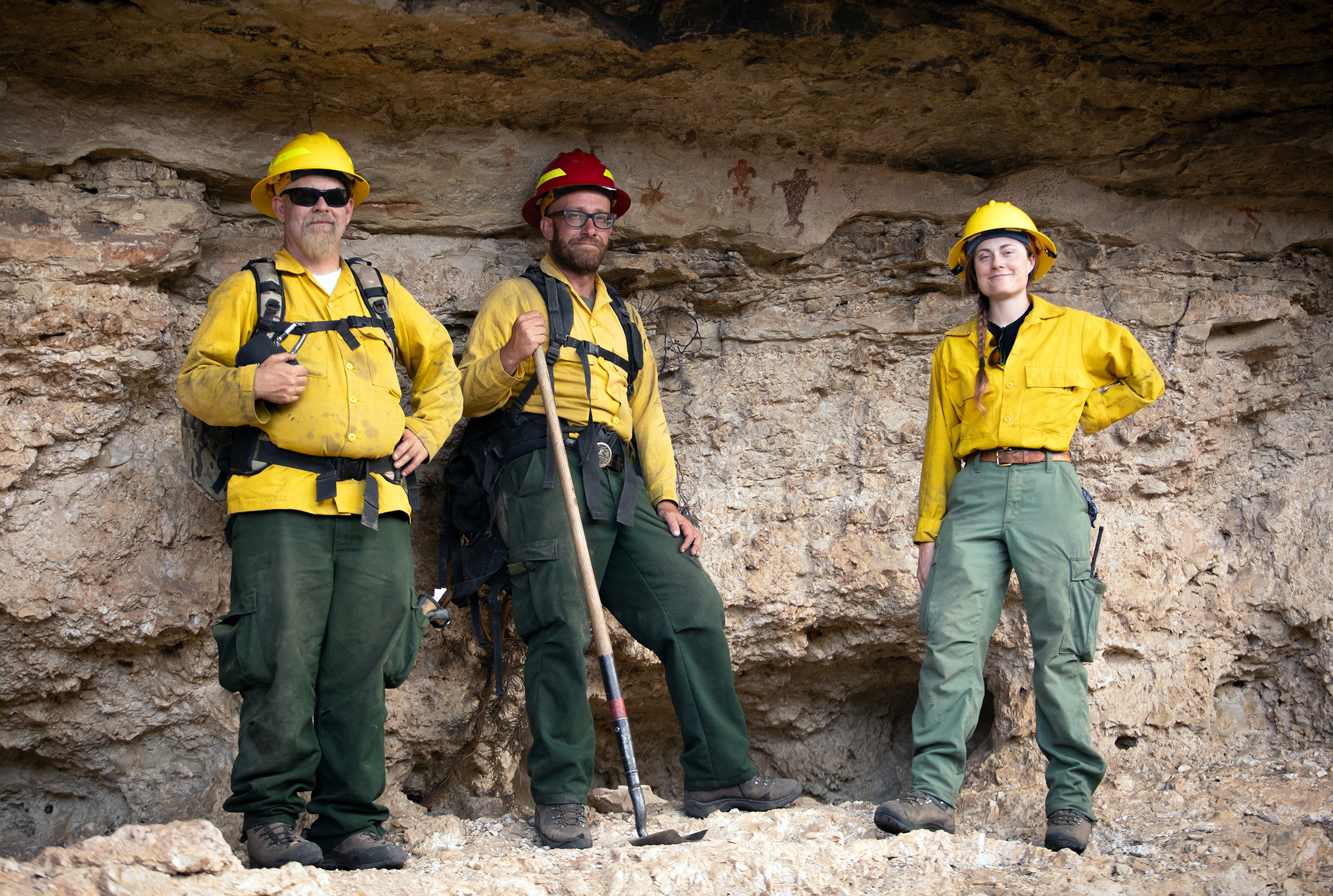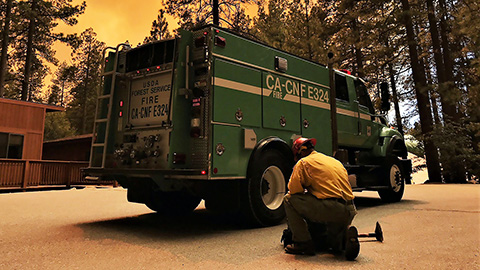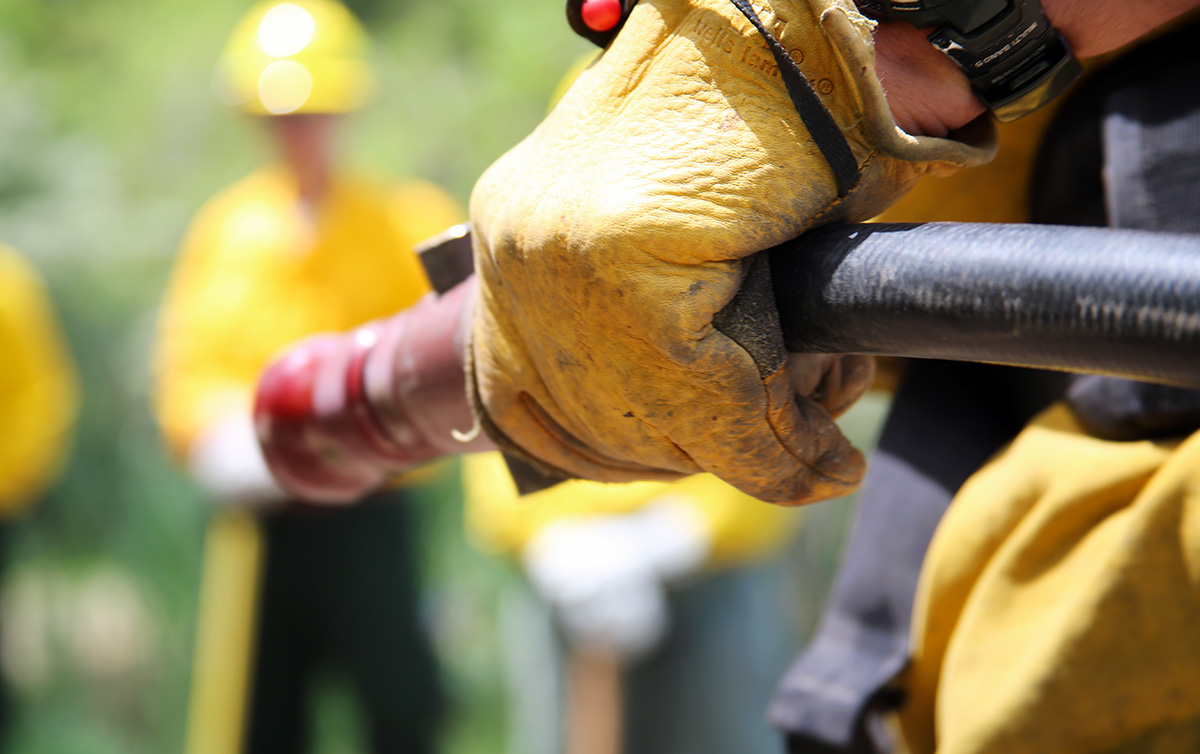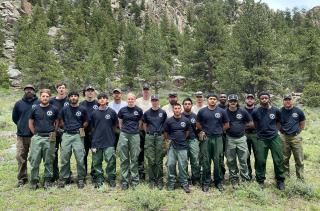
Deep in a canyon in Colorado, six Forest Service trucks from Nebraska sit in the shade of a row of pines as firefighters pile brush nearby. A wildland fire crew from Nebraska’s Pine Ridge Job Corps is preparing for a prescribed burn while seasonal employees are being brought onboard.
“We’ve gone on five crew assignments already this season,” said Dayton Cleveland, supervisor for Nebraska’s Pine Ridge Job Corps’ Soldier Creek Wildland Fire Hand Crew. “This time of year, forests don’t have the employees, but we always have students ready to go. Before coming into this position, I didn’t realize how available Job Corps is for this.”
What is Job Corps?
Job Corps is the largest nationwide residential career training program in the country. The program helps eligible young people complete their high school education, trains them for meaningful careers, and assists them with obtaining employment, all at no cost. As part of the program, the Forest Service operates 24 Job Corps Civilian Conservation Centers. These centers combine the traditional Job Corps program with an opportunity to gain the skills required to conserve the nation’s natural resources. Most of these centers have a wildland fire crew. At any one time, Job Corps has the capacity to dispatch more than 1,000 firefighter-qualified students to support wildland fires, hazardous fuels reduction, and forest health programs nationwide, which has proved pivotal in confronting the nation’s wildfire crisis.
In January 2022, on the heels of some of the largest, most destructive fires in the nation’s history, the Forest Service implemented a 10-year strategy to address the wildfire crisis. Job Corps became a critical part of that effort, helping fill the demand for wildland fire crews to complete proactive fire mitigation work in the most at-risk landscapes.

Cleveland and his 20-person wildland fire crew were dispatched to help in the largest of those wildfire crisis landscapes, the Colorado Front Range, which includes the Arapaho-Roosevelt National Forests and Pawnee Grassland and the Pike-San Isabel National Forest. They’re the third Job Corps crew to come through the Roosevelt National Forest in 2023.
“Thanks to the Job Corps wildland fire crews that are helping out, we are accomplishing so much more this season than we would have on our own,” said Jason Sieg, deputy forest supervisor for the Arapaho and Roosevelt National Forests. “Bringing these crews out to local forests is also a great recruitment opportunity for us. It exposes people to national forests who may not have had that opportunity in their lives, and it opens their minds to a possible future Forest Service career.”
Careers in fire
Luke Hill, lead firefighter for Boxelder Job Corps out of South Dakota, just finished leading the crew through burn prep on the same Colorado Front Range project as Soldier Creek, but in 2013 he was studying brick masonry.
“I got into Job Corps to find a trade and got the opportunity to join a crew there,” said Hill. “After getting to go on a few assignments, I left brick masonry for an advanced fire training school at Schenck Job Corps in North Carolina. I joined a Hotshot crew, did that for seven years, and now I’m here at Boxelder giving back to the program. I never really thought of myself as a teacher, but the more I’ve been doing this the more I think I can do this.”
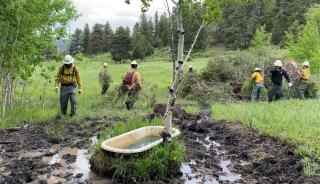
Career growth in fire has a promising outlook with growing attention around firefighter pay and the reassurance of continued work backed by the Forest Service’s new 10-year strategy. This strategy includes working with partners to dramatically increase fuels reduction and forest health treatments by up to four times the current treatment levels in the West, which affords more opportunities to more firefighters and increases incentives for Job Corps students getting their foot in the door.
Firefighters in the making
“It’s amazing to see how far the Job Corp fire program has come over recent years,” said Cody Peel, fire, fuels and aviation staff officer for the Arapaho and Roosevelt National Forests. “They are a well-equipped, dependable and professional program with great students and leaders. They have really turned up the knob on their fire training program in recent years, making sure the students have the right equipment and are ready for the jobs they are being asked to do. They can be proud of themselves and the work they are doing.”
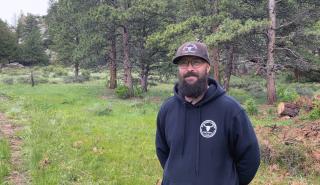
Cleveland and his crew spent weeks thinning and prepping lines, felling snags, brushing, limbing and bucking up trees in preparation for this prescribed burn.
“I’ve been in fire for a long time and you kind of run out of steam doing the same job for a while, but, these individuals, they don’t take anything for granted. Everything they’re out here doing is something new to them and something they probably never thought they’d get the chance to do. The appreciation they have is great. When it’s October and you’re tired, these employees give you new life. They want to go. They want to get out and do this, and that’s crucial for these high-risk landscapes.”

